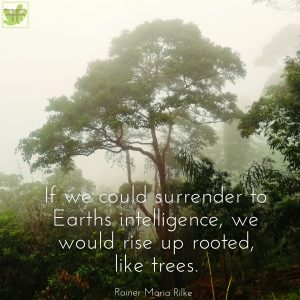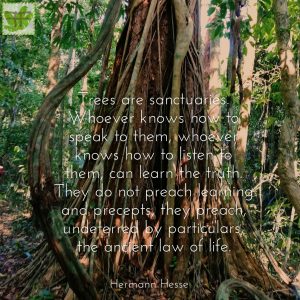
What to Eat when the Stores are Empty
Simple, Localized Approaches to Food Systems Resilience and Food Security in Southeast Asia
Here at Feun Foo, preparing for the coming decades of increasing climatic instability is a top priority. With the global climate destabilizing relentlessly, the likelihood of the near-term collapse of various crucial systems that sustain global civilization increases, and thus the collapse of civilization itself may be much closer than we think. Collapse of this sort is in fact increasingly viewed as a scenario with relatively high likelihood by researchers and other authorities, and the topic even slowly starts to enter mainstream discussion. The most pressing issue when talking about systems collapse is food, since people can live without, say, electricity, but not without food.
In this series, we will explore certain strategies and methods that we experiment with here on our farm: ideas, schemes, techniques and practices that have a high potential to increase food security throughout the region if applied on a large enough scale (and accompanied by other radical reforms, such as economic degrowth, land reform, urban exodus, ceasing of all further “land development”, widespread rewilding efforts, and a drastic decrease in consumption of all kinds).
Our objective here is to provide a comprehensive summary of the challenges we face in the coming decades, and talk about a few possible solutions and adaptations that can help us cope with the turbulent times ahead. One of the main problems with “official” reports about climate change and other future challenges (like from the IPCC and various NGOs) is that they contain very little in terms of practical solutions (especially relating to food security) and are often formulated in an overly careful fashion as to not upset the false sense of security of the donors and governments who sponsor them. On the other hand, anything practical that relates to food security, like planting guides, horticultural classes and gardening handbooks often fail to link gardening techniques (and food production in general) to climate change, and – if they mention it – don’t tend to present the situation as serious as it is, as in relating to widespread societal collapse. We attempt a synthesis of those two obviously related points: a way of food production informed by the looming threat of systems collapse and a climate spinning out of control.
We make clear from the beginning on that this document is merely meant to be an inspiration, a conversation starter – not a definite roadmap – and we acknowledge that much of what we present here, both as the problems and in terms of actual solutions, will probably fall on deaf ears. This is partly because of the severity and depth of the social, political, and cultural changes required to adapt to this changing world – many people will consider this report as “too radical”, dismissing the fact that radical problems require radical solutions. Decades of climate research and increasingly shrill warnings by scientists have utterly failed to result in any noteworthy reduction of greenhouse gas emissions or other widespread efforts to mitigate the effects of the many crises that are currently unfolding; politicians freely commit to any climate plan that starts somewhen next decade but want no such thing during their own time in office; the all-powerful agricultural industry is too busy counting profits to pay attention to anything beyond the next quarter – the last thing Big Agriculture wants is a breakup of their monopoly on the food supply, and terms like “decentralization”, “local” and “organic” are like curse words to them. We can’t rely on governments, scientists or the agricultural sector to help us, so we better figure out something by ourselves.
The Introduction will provide you with the basic conceptual framework, an overview of the situation that we find ourselves in, as well as scientific explanations of past trends and future predictions. Once you’ve worked your way through this (rather dry and technical) Introduction, more practical approaches await you. In fact, some parts of this series read almost like a cookbook! At first, we will talk about staple foods that form the very basis of our diet and make up the bulk of each meal (hint: we need to look beyond rice here), and how to ensure adequate nutrition in general. We will explain some basic practical techniques to adapt food systems to a changing climate and strengthen their natural resilience, and we are going to explore core concepts, like diversity, energy and resource usage, de-growth and conservation. We will even talk about possible policies that could lead to an increase in food security (and have a number of other benefits).
Again and again, we will come back to the main focus of our work – food security – and see that it’s all connected. As the saying goes, we are what we eat; and the goal is to become, both ideologically as well as regarding our subsistence mode, less like uniform stalks of rice standing straight at attention in endless rows, and more like the multifarious assembly of the myriad species that call the forest their home.
Contents
- Part Zero: Introduction – What’s the Problem?
- Part One: Creating a Food Jungle – What Nature can teach us
- Part Two: Staple food diversification – Jackfruit and Artocarpus spp.
- Part Three: Staple food diversification – Cassava, Yams and various Wild Tubers
- Part Four: Staple food diversification – Bananas and Plantains
- Part Five: Food diversification – Protein sources
- Part Six: Food diversification -The importance of Wild Plants
- Part Seven: Soil improvement – Water retention capacity
- Part Eight: Soil improvement – Biomass and soil carbon
- Part Nine: Cultural shift – Anthropocentrism to Biocentrism
- Part Ten: Cultural shift – Back to the Land!
- Part Eleven: Cultural shift – Degrowth instead of Progress & Development
- Part Twelve: Policy proposals – Radically reduce emissions
- Part Thirteen: Policy proposals – Freeze or erase student loan debts
- Part Fourteen: Policy proposals – Land reform




















![[English version below]
ช่วงนี้ลูกเนยถั่วออกเยอะมากๆเก็บกินแทบไม่ทัน😅
นี่เก็บจากต้นเดียวเอง เป็นผลไม้จากทวีปอเมริกาใต้อีกชนิดหนึ่งที่เรามีในสวน กินอร่อยจริง รสชาติสมชื่อ คือเหมือนกินเมล็ดถั่วกับเนยในลูกเดียว ต้นนี้ปลูกง่าย โตเร็ว ชอบอากาศร้อนชื้นและแห้งแล้ง ลูกสุกเปลี่ยนสีเป็นสีแดงตามรูปเลย เนื้อนุ่มเคี้ยวละมุนในปากแต่เนื้อค่อนข้างติดเมล็ด😋 ปลูกแค่2-3ปีก็ออกลูกให้กินแล้วเผลอๆอาจจะแค่ปีกว่าๆก็ออกลูกได้แล้ว ถ้าขยันดูแลดีเป็นพิเศษ😅 ตอนที่นั่งกินทำให้มีความรู้สึกเหมือนกำลังกินขนมหรือลูกอม เพราะกินสนุก กินอร่อยๆ และปลอดภัยต่อสุขภาพแบบเกินร้อยถ้าเทียบกับขนมตัวจริง😅 เด็กๆกินได้ผู้ใหญ่ก็กินได้ต้นนี้เลย ต้นเนยถั่ว😋
ปล. หากท่านใดสนใจอยากได้เมล็ดพันธุ์ติดต่อสวนเราได้จ้า😍 มีเยอะคะช่วงนี้😀 เราจัดส่งเมล็ดให้ฟรีๆเพียงแค่คุณต้องจ่ายค่าส่งเองเท่านั้น อยากได้เมล็ดเม้นท์ใต้โพสต์หรือส่งข้อความหาเราได้เลยคะ😍
The peanut butter tree gifts us generously this year - after only three years, we finally harvest enough to eat as much as we would like to. We spread the seeds by throwing handfuls around in the upper half of the garden, and since they sprout pretty easily we will have plenty more in the years to come, and there's gonna be plenty of leftovers for the birds as well (who also really enjoy peanut butter fruit, but only occasionally get to eat a fruit we missed) 😊
#permaculture #peanutbutterfruit #healthysnack #slowfood #junglelife](https://scontent-sin6-4.cdninstagram.com/v/t51.29350-15/283300740_155802276938680_7664917016698200906_n.webp?stp=dst-jpg&_nc_cat=101&ccb=1-7&_nc_sid=8ae9d6&_nc_ohc=fWTX5D0N1VUAX9Wlb-G&_nc_ht=scontent-sin6-4.cdninstagram.com&edm=ANo9K5cEAAAA&oh=00_AT-NxLhSMBjV6-esVM29Z7t4UHCbZjoFcBYeowWnf2IdIg&oe=628F14D4)
![[English version below]
ช่วงนี้ลูกเนยถั่วออกเยอะมากๆเก็บกินแทบไม่ทัน😅
นี่เก็บจากต้นเดียวเอง เป็นผลไม้จากทวีปอเมริกาใต้อีกชนิดหนึ่งที่เรามีในสวน กินอร่อยจริง รสชาติสมชื่อ คือเหมือนกินเมล็ดถั่วกับเนยในลูกเดียว ต้นนี้ปลูกง่าย โตเร็ว ชอบอากาศร้อนชื้นและแห้งแล้ง ลูกสุกเปลี่ยนสีเป็นสีแดงตามรูปเลย เนื้อนุ่มเคี้ยวละมุนในปากแต่เนื้อค่อนข้างติดเมล็ด😋 ปลูกแค่2-3ปีก็ออกลูกให้กินแล้วเผลอๆอาจจะแค่ปีกว่าๆก็ออกลูกได้แล้ว ถ้าขยันดูแลดีเป็นพิเศษ😅 ตอนที่นั่งกินทำให้มีความรู้สึกเหมือนกำลังกินขนมหรือลูกอม เพราะกินสนุก กินอร่อยๆ และปลอดภัยต่อสุขภาพแบบเกินร้อยถ้าเทียบกับขนมตัวจริง😅 เด็กๆกินได้ผู้ใหญ่ก็กินได้ต้นนี้เลย ต้นเนยถั่ว😋
ปล. หากท่านใดสนใจอยากได้เมล็ดพันธุ์ติดต่อสวนเราได้จ้า😍 มีเยอะคะช่วงนี้😀 เราจัดส่งเมล็ดให้ฟรีๆเพียงแค่คุณต้องจ่ายค่าส่งเองเท่านั้น อยากได้เมล็ดเม้นท์ใต้โพสต์หรือส่งข้อความหาเราได้เลยคะ😍
The peanut butter tree gifts us generously this year - after only three years, we finally harvest enough to eat as much as we would like to. We spread the seeds by throwing handfuls around in the upper half of the garden, and since they sprout pretty easily we will have plenty more in the years to come, and there's gonna be plenty of leftovers for the birds as well (who also really enjoy peanut butter fruit, but only occasionally get to eat a fruit we missed) 😊
#permaculture #peanutbutterfruit #healthysnack #slowfood #junglelife](https://scontent-sin6-1.cdninstagram.com/v/t51.29350-15/281748280_711057433442587_7897669658700971285_n.webp?stp=dst-jpg&_nc_cat=111&ccb=1-7&_nc_sid=8ae9d6&_nc_ohc=5Wgi4EpwkV0AX8FBOiS&_nc_ht=scontent-sin6-1.cdninstagram.com&edm=ANo9K5cEAAAA&oh=00_AT8ex-gNO2q9J-QODVZZWxwSI6bqpMjqDd1Qr1Ji7mQ3Hw&oe=62906D82)
![[English version below]
ช่วงนี้ลูกเนยถั่วออกเยอะมากๆเก็บกินแทบไม่ทัน😅
นี่เก็บจากต้นเดียวเอง เป็นผลไม้จากทวีปอเมริกาใต้อีกชนิดหนึ่งที่เรามีในสวน กินอร่อยจริง รสชาติสมชื่อ คือเหมือนกินเมล็ดถั่วกับเนยในลูกเดียว ต้นนี้ปลูกง่าย โตเร็ว ชอบอากาศร้อนชื้นและแห้งแล้ง ลูกสุกเปลี่ยนสีเป็นสีแดงตามรูปเลย เนื้อนุ่มเคี้ยวละมุนในปากแต่เนื้อค่อนข้างติดเมล็ด😋 ปลูกแค่2-3ปีก็ออกลูกให้กินแล้วเผลอๆอาจจะแค่ปีกว่าๆก็ออกลูกได้แล้ว ถ้าขยันดูแลดีเป็นพิเศษ😅 ตอนที่นั่งกินทำให้มีความรู้สึกเหมือนกำลังกินขนมหรือลูกอม เพราะกินสนุก กินอร่อยๆ และปลอดภัยต่อสุขภาพแบบเกินร้อยถ้าเทียบกับขนมตัวจริง😅 เด็กๆกินได้ผู้ใหญ่ก็กินได้ต้นนี้เลย ต้นเนยถั่ว😋
ปล. หากท่านใดสนใจอยากได้เมล็ดพันธุ์ติดต่อสวนเราได้จ้า😍 มีเยอะคะช่วงนี้😀 เราจัดส่งเมล็ดให้ฟรีๆเพียงแค่คุณต้องจ่ายค่าส่งเองเท่านั้น อยากได้เมล็ดเม้นท์ใต้โพสต์หรือส่งข้อความหาเราได้เลยคะ😍
The peanut butter tree gifts us generously this year - after only three years, we finally harvest enough to eat as much as we would like to. We spread the seeds by throwing handfuls around in the upper half of the garden, and since they sprout pretty easily we will have plenty more in the years to come, and there's gonna be plenty of leftovers for the birds as well (who also really enjoy peanut butter fruit, but only occasionally get to eat a fruit we missed) 😊
#permaculture #peanutbutterfruit #healthysnack #slowfood #junglelife](https://scontent-sin6-3.cdninstagram.com/v/t51.29350-15/281872908_168143295660521_2987194449941779810_n.webp?stp=dst-jpg&_nc_cat=106&ccb=1-7&_nc_sid=8ae9d6&_nc_ohc=GK8ricbSfgIAX8ZbpMH&_nc_ht=scontent-sin6-3.cdninstagram.com&edm=ANo9K5cEAAAA&oh=00_AT8nW1-qCG5_lEoJuLeeMxsi9mh5yYVuZI-qlgv86RVIgA&oe=628F1714)
![[English version below]
จำปาดะ (ผลไม้อีกชนิดหนึ่งในตระกูลขนุน) ต้นนี้ที่อยู่ข้างบ้านของเรา ออกดอกติดผลให้กินมากขึ้นในแต่ล่ะปี ตอนนี้ต้นกำลังออกดอก แต่ดูเหมือนว่าจำปาดะจะติดเยอะมากปีนี้ (เย่) อยากกินแล้วน๊า!! 😋
The cempedak tree besides our house gifts us with more and more abundance each year - she just started flowering, but it already looks like it's gonna be a good year for cempedak! Can't wait!!
#cempedak #artocarpus #abundance #foodjungle #permaculture #junglelife #subsistencefarming](https://feunfoo.org/wp-content/uploads/2022/02/273890094_1026327931566679_2121004513380987491_n.jpg)
![[English version below]
มะวานที่พวกเราเราขึ้นไปเอาข้าวให้ไก่และดูพระอาทิตย์ตก พอดีถือโทรศัพท์ติดตัวไปด้วย และนี่ก็คือวิวยามเย็นสวยสุดๆที่ได้เห็นกัน! เหตุที่หมอกทั้งหนาและสูงถึงเพียงนี้ก็คือ ฝนตกทั้งวันแล้วก็หยุดตกก่อนจะมืดค่ำ มันแปลกมากๆ เพราะนี่มันกำลังจะเข้าฤดูร้อนแล้ว แต่มันเป็นเรื่องดีมากสำหรับพืชสวน ต้นไม้ต่างก็มีความสุขกัน พวกเราเองก็ไม่ต้องรดน้ำผักไปอีกอาทิตย์หนึ่งเลยทีเดียว!
ช่วงไม่กี่เดือนมานี้อาจจะไม่ค่อยเห็นพวกเราอัพเดตเรื่องราวของสวนลงในสังคมอออนไลน์เท่าไหร่ มีเหตุผลอยู่ว่า ไม่อยากจะพกพาโทรศัพท์ติดตัวตลอดและอยากจะสนุกเพลิดเพลินไปกับสิ่งที่พวกเราทำกัน แทนที่จะมัวขบคิดว่ามันจะดูยังไงในรูปถ่าย แต่ยังไงพวกเราก็คงจะมาอัตเดตกันบ่อยขึ้นหลังจากนี้ ถ้ามีเวลาและแรงบันดาลใจ😄
Yesterday we finally had our phone with us again when we went to feed the chicken/watch the sunset, and this is what we were rewarded with! It rained the whole day and just cleared up before dusk - very strange, considering that it's dry season. Well, the garden loves it, the trees are happy, and we don't have to water our vegetables for at least another week!
We've been rather quiet on social media for the past few months, for no particular reason other than that we don't want to carry around our phone all the time, and just enjoy things instead of thinking how they would look like on camera 😀 Call it a partial digital detox! 😁 Well, maybe from now on we'll post more regularly, if we find the time and motivation 😜
#slowlife #sunset #permaculture #hillpeople
#junglelife #panorama #foodjungle](https://feunfoo.org/wp-content/uploads/2022/02/273822326_165241689169172_8620684220343524182_n.jpg)



No comments.